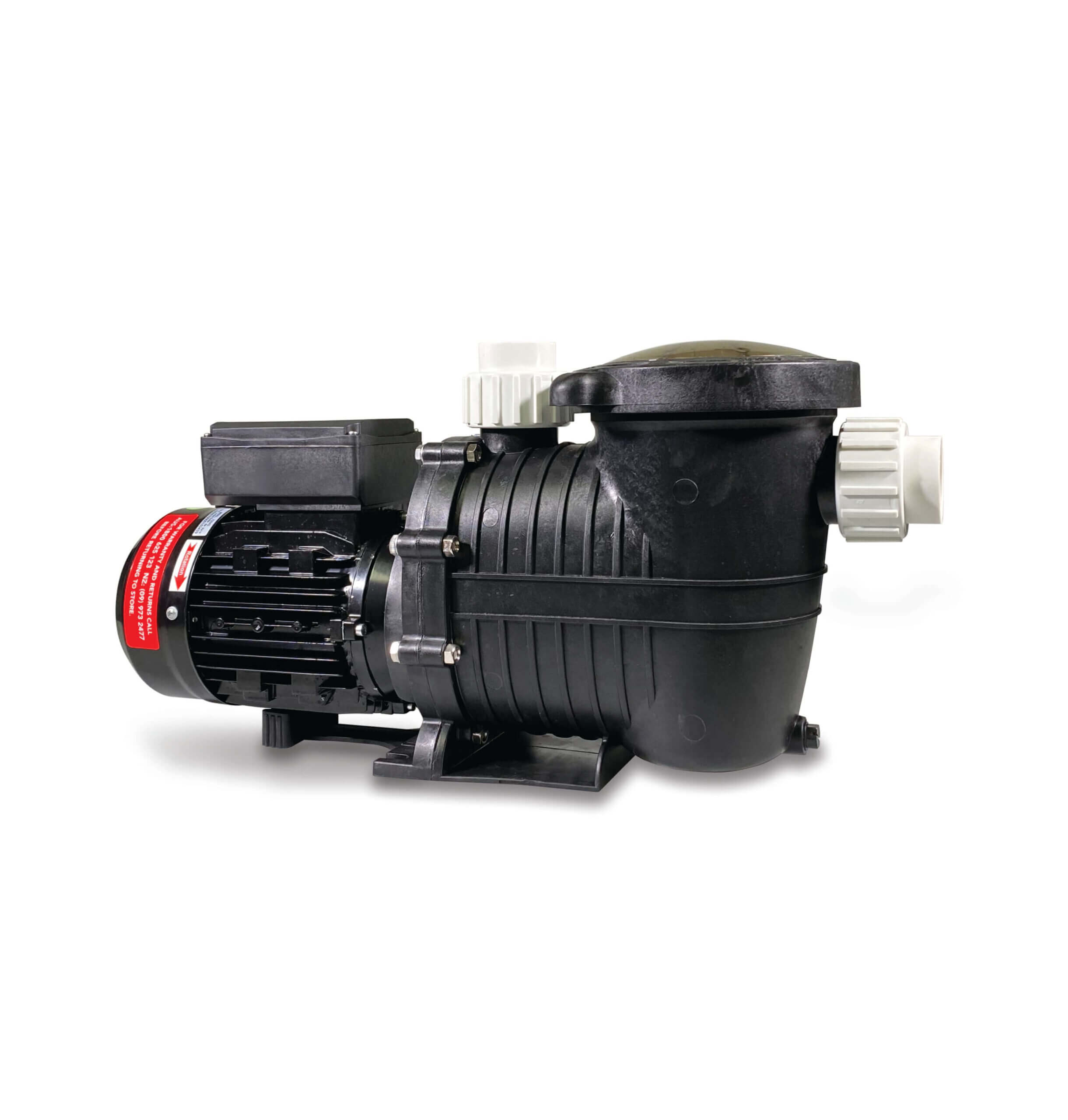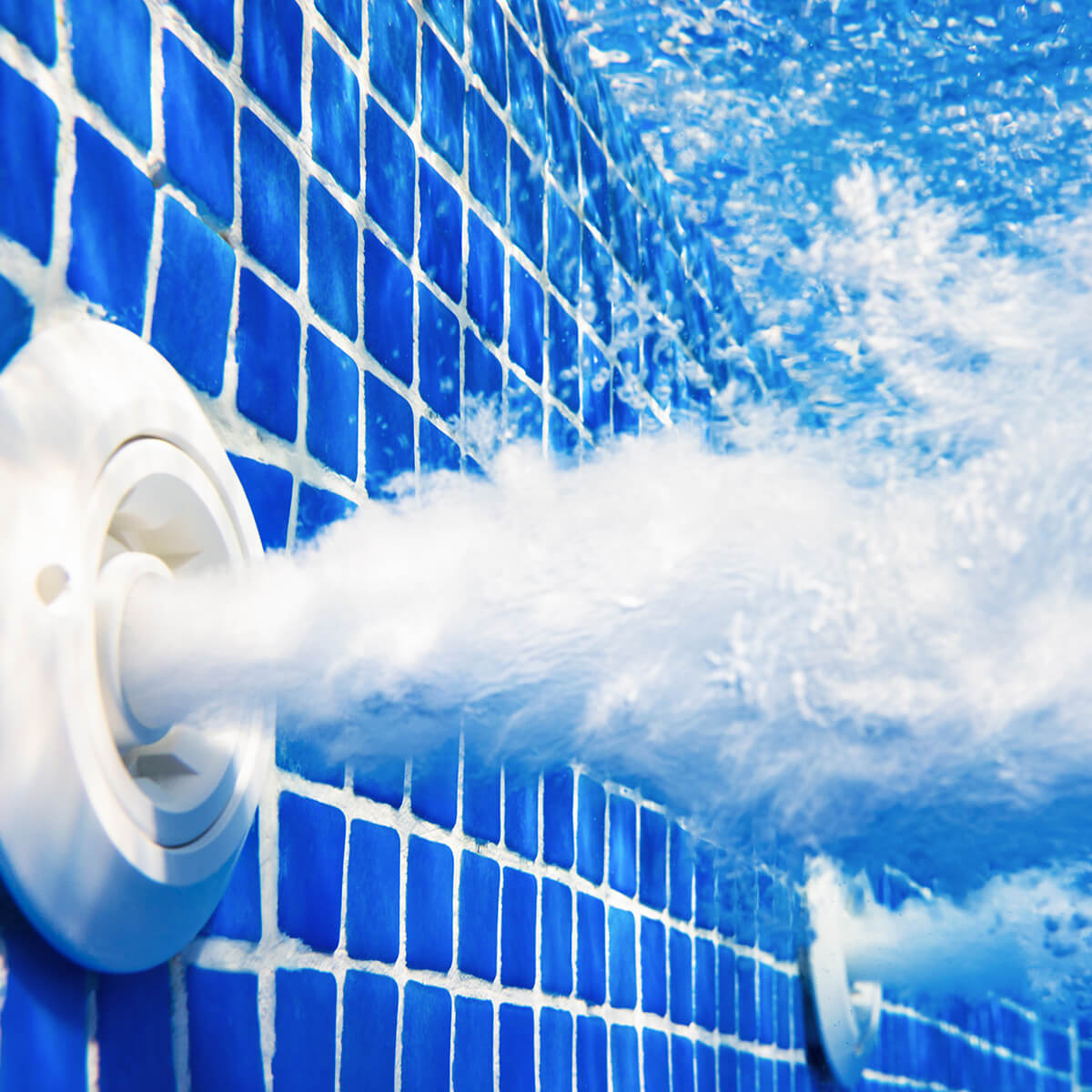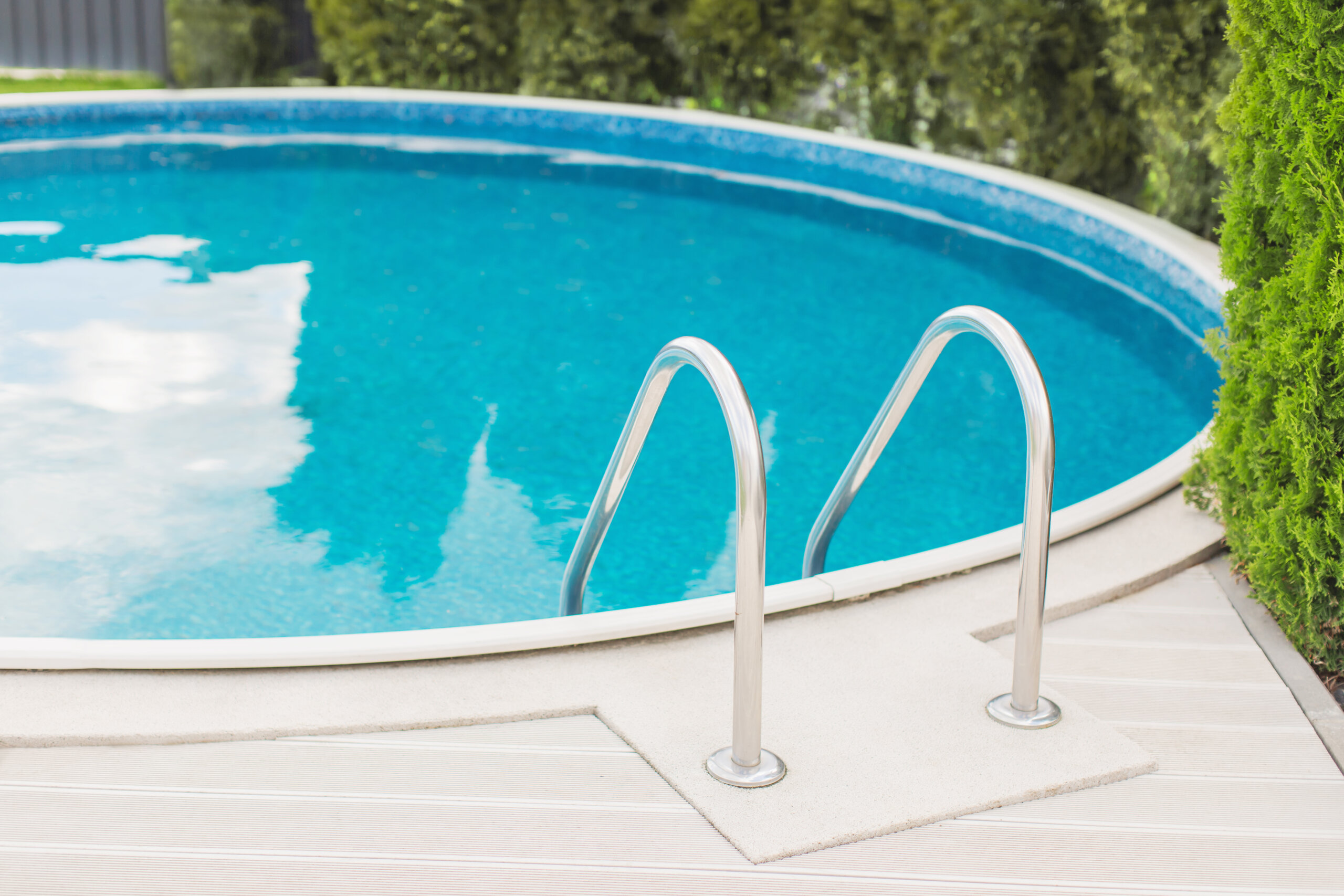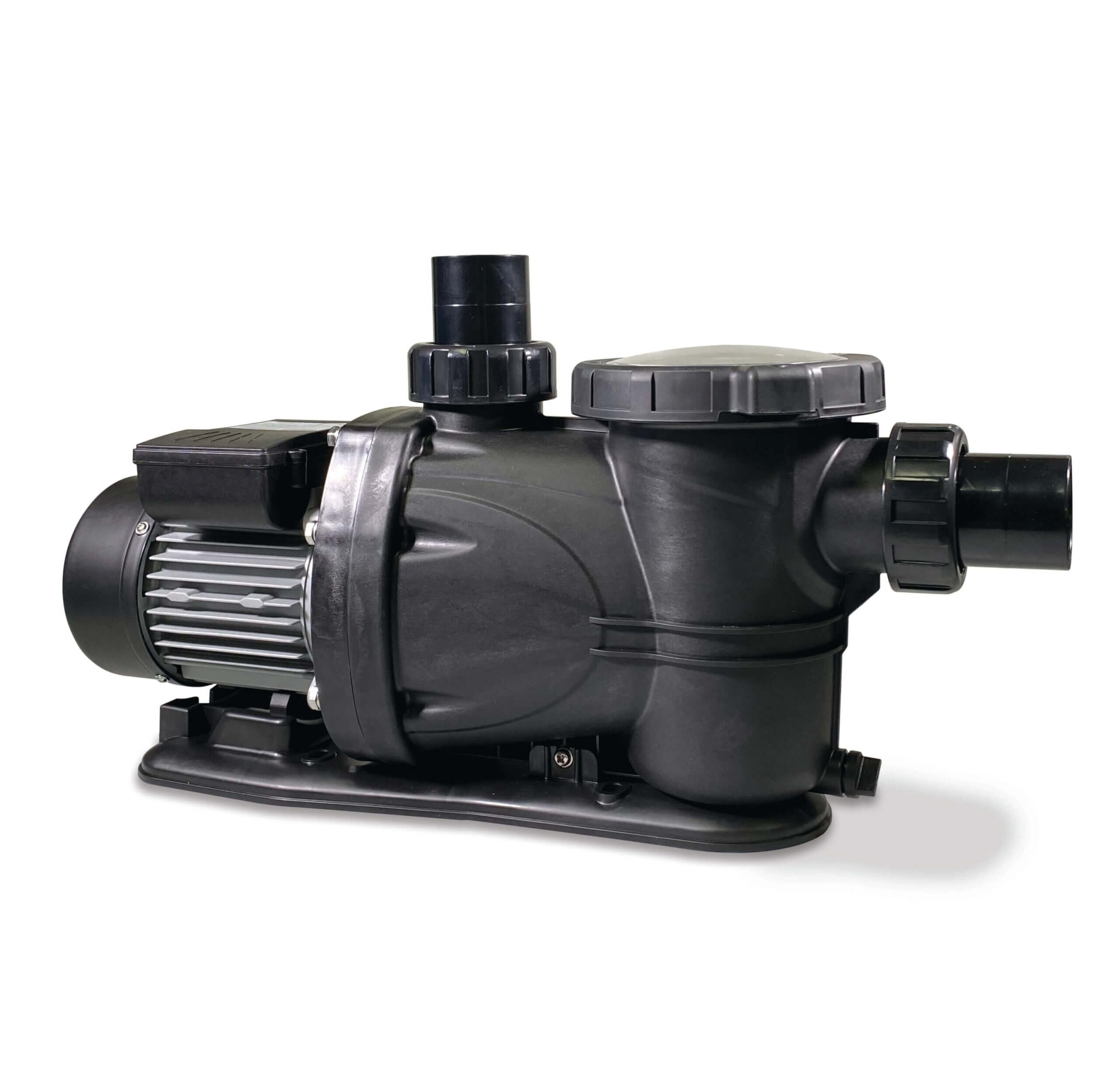A pool pump is the heart of your pool’s circulation system, creating clean, clear water for worry-free swimming. Without an efficient pump, your pool would quickly become a breeding ground for algae, bacteria, and debris.
Did you know that an average pool pump can circulate thousands of litres of water each day, ensuring that every drop is filtered and sanitised?
But how does a pool pump work?

The Role of a Pool Pump
The unsung hero behind a pristine pool is the pool pump. It continuously draws in pool water, sends it through the filtration system for cleaning, and then returns the clean water back to the pool.
This constant circulation performs several crucial functions:
- Keeps your water crystal clear: By continuously pulling water through the skimmer, the pump removes floating debris like leaves, insects, and dirt before they can sink and decompose. This prevents cloudy or murky water, keeping your pool sparkling and inviting.
- Chemical distribution: Pool chemicals like chlorine and algaecide need to be evenly distributed throughout the pool water to be effective. The pump’s circulation ensures these chemicals reach every corner of the pool, preventing the growth of algae and bacteria that can cause irritation and even pose health risks.
- Optimises filtration: The filter is another key player in maintaining clean water, but it can’t do its job without the pump. By constantly pushing water through the filter media, the pump allows the filter to trap finer dirt and contaminants.
As you can see, an efficient pool pump is essential for maintaining proper water hygiene and safety in your swimming pool. It keeps your pool water clear, balanced, and enjoyable for everyone.
How Pool Pumps Operate
Now that we understand their role, let’s take a peek inside and see exactly how pool pumps operate.
Intake: Pool water is drawn into the pump through the skimmer and the main drain. The skimmer, located at the waterline, captures debris like leaves and insects. The main drain, at the pool’s deepest point, draws in settled dirt and debris.
Impeller: Once the water enters the pump, it reaches the impeller, a spinning disc with fan-like blades. When the pump motor starts, the impeller spins rapidly, creating centrifugal force. This force pushes water outward, creating a low-pressure area in the centre of the pump.
Suction: The low-pressure zone acts like a vacuum, pulling water from the skimmer and main drain into the pump, initiating the pool circulation process.
Outflow: Water expelled by the impeller exits the pump through the discharge outlet. This continuous flow of water is pushed through the filter for cleaning and then returned to the pool via the return jets.
By understanding how pool pumps work, you can keep them running smoothly and enjoy crystal-clear water all season long.


Pool Pump Components
Understanding the key pool pump components helps us grasp how these integral parts work together to keep your pool water clean and circulating.
- Strainer basket – Located just before the impeller, it traps large debris like leaves, twigs, and insects, preventing them from entering the pump and causing damage or clogs.
- Impeller – As discussed earlier, the impeller is a spinning disc with fan-like blades positioned after the strainer basket. When the motor powers the impeller, it spins rapidly, generating the necessary suction to draw water from the pool and propel it through the pump and filter system.
- Motor – The motor is the powerhouse of the pool pump. It converts electrical energy into mechanical energy, which spins the impeller. The motor’s efficiency directly affects the pool pump’s performance and longevity.
- Housing – The pump housing or casing encloses all the internal components and provides protection from environmental elements. It also helps maintain optimal pressure and flow by ensuring that water moves efficiently through the various stages of the pump.
- Seal plate and shaft seal – The seal plate and shaft seal work together to prevent water from leaking out of the pump where the motor connects to the impeller.
These pool pump components are essential for maintaining the integrity of the pool pump’s operation.
The Circulation System In Action
The pool circulation system starts with water intake through the skimmer, which captures larger debris. The water then moves to the pump for filtration.
In the pump, water passes through filters that remove fine particles, microorganisms, and contaminants. Depending on your setup, the water may go through heating or chlorination units to ensure it’s safe and comfortable for swimming.
Finally, the clean water returns to the pool through return jets, creating continuous circulation.
Proper circulation prevents water stagnation, which can lead to algae growth, bacterial proliferation, and other issues.
It ensures the even distribution of chemicals, maintains balanced water properties, and provides an inviting swimming environment.


The Importance of Choosing The Right Pool Pump
Selecting the right-sized pool pump is vital for maintaining overall pool efficiency and effectively managing energy consumption.
A pool pump that is too powerful for your pool can lead to unnecessary energy usage, higher operational costs, and even potential damage to the circulation system components such as sand and cartridge filters.
Conversely, an undersized pool pump may struggle to adequately circulate and filter the water, leading to poor water quality and increased maintenance needs.
Factors to consider when choosing a pool pump:
- Pool size and volume: Understanding your pool’s volume helps determine the flow rate required to circulate the water effectively within a specific time frame, usually calculated in litres per minute (LPM).
- Pump efficiency: Modern pool pumps offer variable speeds, which can be adjusted based on the pool’s needs, significantly reducing energy consumption and costs.
- Pool usage: Frequent or commercial use pools may require a more robust pump to handle higher water contamination levels and ensure optimal filtration.
- Plumbing and equipment compatibility: Make sure the pump you choose is compatible with existing plumbing, filters, and other pool equipment to avoid operational inefficiencies and additional upgrade costs.
- Energy-efficiency: Look for energy-efficient models to benefit from long-term savings.
Selecting a pump that balances performance with energy efficiency ensures clean water, reduces energy bills, and extends the lifespan of your pool equipment.
Looking To Optimise Your Pool’s Performance?
First, know your pool’s size and volume to determine the necessary pool water flow rate for proper water circulation. A general rule of thumb is that you need a pump that can turnover the entire volume of your pool in 4 hours. For example, if you have a 40,000L pool you will require a pump that has a flow/min of 170L (at the head of your system). Modern variable-speed pumps can significantly reduce energy costs, so pump efficiency is an important factor. Also, choose a pump that is compatible with existing plumbing to avoid inefficiencies and extra costs.
Focusing on these factors will allow you to enjoy a clean, efficient pool with lower energy bills and longer-lasting equipment.
Want to get the most out of your pool?
Explore Hy-Clor’s range of high-quality pool pumps, engineered for optimal performance and durability.




